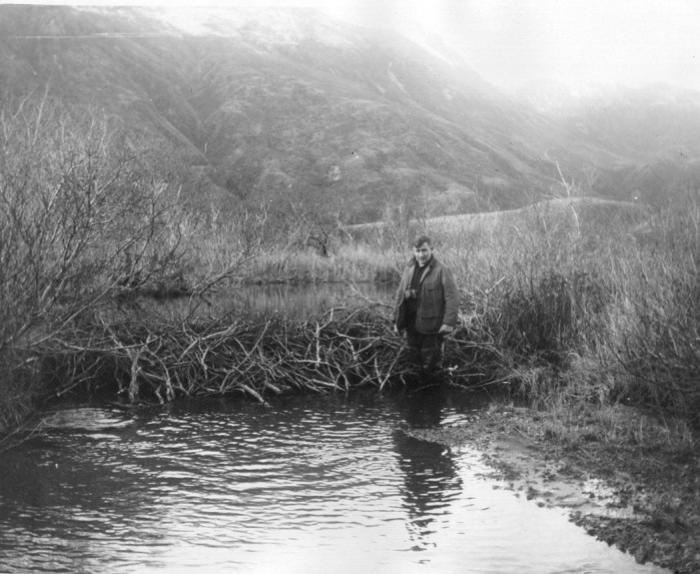Beaver — Paluqtaq

Although beavers (Castor canadensis) thrive around Kodiak today, they are not part of the region’s original fauna. Beavers were introduced to the archipelago in 1925 in an effort to provide valuable game for trapping and a commodity for the fashion industry. Most beaver trapping was done in the fall and winter, after the summer fishing season. Alutiiq people cleaned and stretched the pelts and then sold them to fur buyers in Kodiak and Anchorage. However, beaver meat was not initially eaten because people were unfamiliar with it and equated the animals with cats and dogs. Alutiiq people learned to prepare beaver meat from other Native peoples who traditionally relied on the beaver for food.
Despite the absence of beavers from Kodiak’s prehistoric landscape, Alutiiq people did use beaver parts regularly. In addition to their pelts, craftsmen coveted the animal’s long, resilient incisors, which they obtained in trade from the Alaska mainland. Carvers hafted beaver incisors into small wooden handles to create tools for detailed woodworking, setting the teeth perpendicular to the long axis of the tool handle to create a gouge.
Today beavers are common in Kodiak’s wetlands. Adult animals can reach four feet in length and weigh as much as eighty pounds. In some areas, particularly southwestern Kodiak Island, beaver dams have modified the landscape, stopping up streams, creating new wetlands, and in the process, damaging some salmon streams. Hunters may trap or shoot beavers from early November through April and are allowed to harvest up to thirty animals each season.
